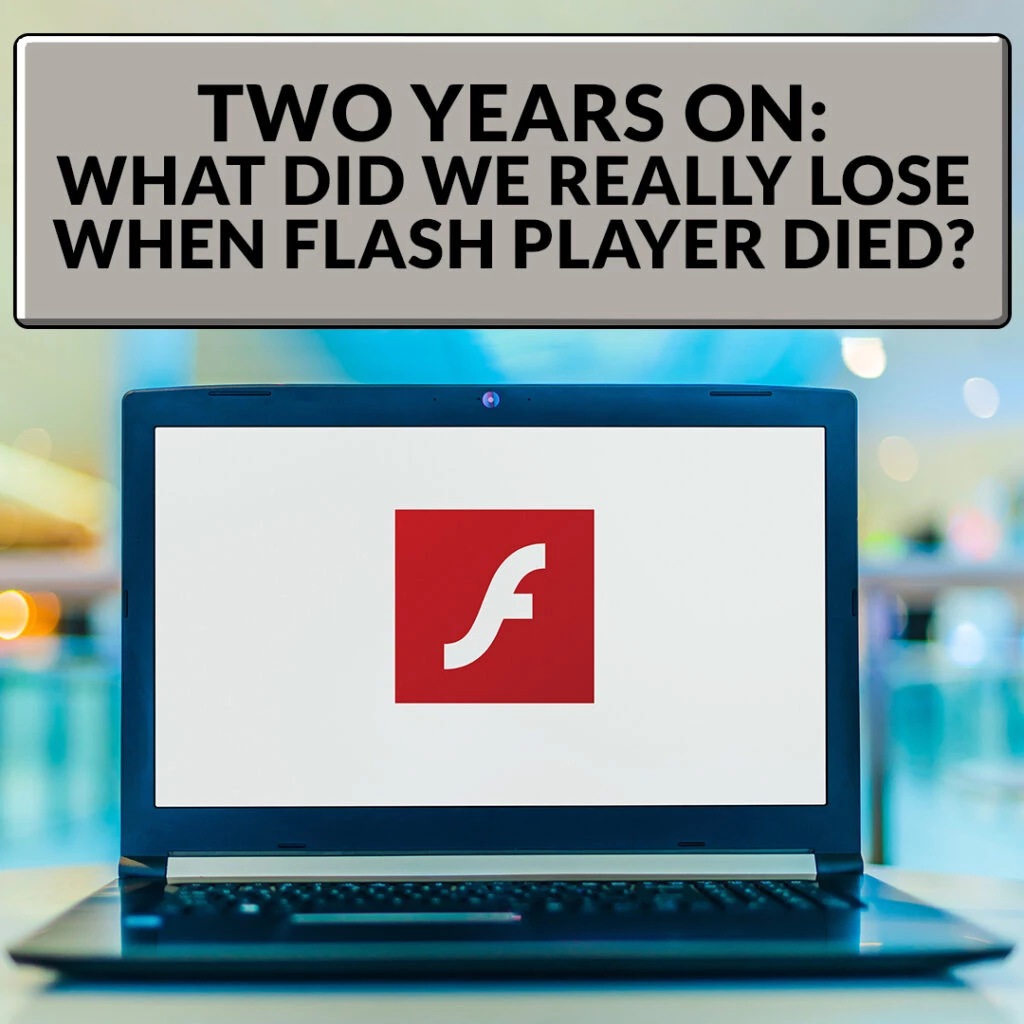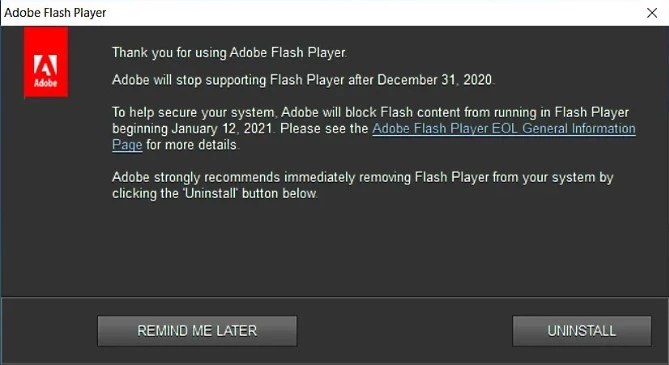Afternoons after a long laborious day at school were well spent browsing the internet. As we avoided our homework, whilst trying to watch the latest viral clip or playing games on Miniclip we all inevitably received the same annoying pop-up that now sparks a feeling of nostalgia, ‘’please install Flash Player’’.
Regarded as the hallmark of the early years of the Internet, Adobe’s Flash Player shaped the way in which people watched videos and played games for 20 years. When Adobe finally pulled the plug back in 2020, it closed a chapter in the history of the internet that continues to be influential today. But what did we really lose when Flash Player died?

Adobe Flash Player:

Originally created in 1996, Adobe Flash Player was a software for viewing multimedia content online, such as videos, or online video games. Flash Player could be run from a simple web browser or utilised as a browser plug-in on a website.
Developers used Flash Player to create popular web apps, animations, videos, and games. The original FarmVille was created with Flash Player, and even viral videos, including Salad Fingers. In addition to online games, Flash Player became influential in the way we streamed online content. The software helped to launch live streaming services such as YouTube in 2005, and even BBC iPlayer in the early 200s, as a way to stream high-quality videos.
The Death of Flash Player:
Adobe announced in 2017 the end of support for Flash Player. This would come into effect in 2020. To protect users, the software began to prompt users to uninstall the program, and Adobe removed all download links for Flash installers. All of the major web browsers, such as Google Chrome, Apple Safari, and Microsoft Edge later revealed that they would officially remove Flash Player on all sites as of January 2021.

Whilst support may have stopped for Flash Player in January 2021, its death began years prior. In 2009, Flash Player was installed on 99% of all internet-connected desktop PCs… Fast forward to 2014 and the figure was closer to 80%. By 2017, a mere 17% of desktop Chrome users visited a site that featured Flash Player. What happened?
Why Did Adobe Flash Player Die?
Arguably, the death of Flash Player began in 2007. Apple released the first iPhone, which didn’t support Flash Player. This meant YouTube and other popular websites had to abandon Flash in order to be compatible with the iPhone. In 2010, Apple removed all support for Flash from their phones, computers, tablets, and more.
The growing popularity of the iPhone and Apple created a domino effect in which more and more websites began to abandon Flash Player in order to be supported on the new generation of mobile phones. This later resulted in the end of development for Flash for mobile in 2011.
In 2015 Apple later completely removed the plug-in on Safari. However, Apple wasn’t the only company limiting support for Flash Player. Google Chrome had also begun blocking content on Flash.
What’s more, the development of better standards, including HTML 5, was also influential in Flash Player’s demise.
HTML 5 proved to be more efficient, powerful, and secure. Security was a big factor in the death of Adobe Flash Player. On repeated occasions, the plug-in was hacked and Adobe had to publish updates and patches to fix the issues this created. However, HTML 5 had better security standards, which ensured people’s information was kept private whilst online.
The benefits of HTML and the fact that it did not require an external plug-in, meant that more and more online browsers began to integrate these modern-day standards. Removing the need for plug-ins, such as Flash Player.
The Aftermath: What Did We Lose?
The death of Flash Player marked the end of the early internet. Arguably now, what we have is much safer, cleaner, and family-friendly for all audiences.
As thousands of beloved videos, animations, and games were wiped, an internet collaborative project was created. Built with the aim of holding on to the nostalgic feelings these games brought people, commemorate the hard work of the developers, and preserve a piece of the internet’s history. This is now known as the Internet Archive, which allows you to view a whole library of Flash content, more than 2,000 puzzles, games, and even videos, without needing a plug-in.
Without projects such as the Internet Archive, thousands of games, videos, and more would have vanished. Even if some mobile games have taken inspired or created direct remakes of Flash games. For example, Diamond Mine has now become Candy Crush.


With that said, these games will never replicate the feelings and enjoyment associated with old Flash Player content. In fact, the struggle to preserve old Flash games brings into question the lifespan of today’s popular games.

Whilst we would like to believe our favourite games will be around forever, the truth is the opposite. Franchises, such as The Sims, have already stopped support for the old generation of games.
Unless you have a collection of old game discs or are willing to pay a hefty price for a copy, you may never be able to play through all your childhood games and relive your favourite moments once more.

Hello 👋 I can still play many of the old flash games on my Windows 11 laptop if I have an swf file ! I was quite surprised that many of them happily worked on that new system .
And some can still be played on the internet today . You just have to know where to
look .
Eventually i am going to burn those file to a CD . Outdated as that medium is . Cd ‘ s last a very long time if you take care of them .